Typical Ingredients in Czech Meals
Czech Republic lies in the moderate climate of Central Europe. The local climate provides a little bit of everything. Because the Czech Republic has all four seasons, the range of accessible local ingredients varies along with the weather.
Czech evergreens
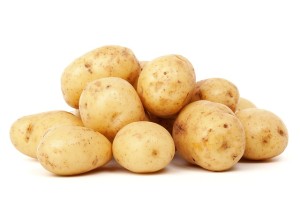 The most popular and most widely used ingredients and crops are those with the longest durability. Despite the invasion of supermarkets and cheap food from abroad, there are still households which grow their own crops, so they have to stockpile it in cellars for winter. Almost three quarters of the year, or maybe the whole year around, you can have on your plate potatoes, beetroot, carrot and root vegetables in general. The Czechs are very keen potato eaters. As well as in some other countries, in the Czech Republic potatoes also provided valuable nutrition in the times of food shortage and famine in the 19th century. Another typical vegetable is cabbage which is similar to other cole crops as broccoli, cauliflower, or Brussels sprouts. Cabbage is a typical vegetable for many East European countries, as well as for China and Japan. Typical Czech ways of preparing cabbage is to stew it with spices, or to put the chopped cabbage in a sweet and sour pickle. Cabbage is used in Czech pastry, as a part of various pickles, soups, as a side dish, in salads and so on. Carrots and other root vegetables are typically used in broths and with roast meat. We also grow and consume quite a lot of legumes as peas and beans and Czech fields provide fertile soil for various types of cereals which lay foundation for Czech pastry and baking which is also very popular.
The most popular and most widely used ingredients and crops are those with the longest durability. Despite the invasion of supermarkets and cheap food from abroad, there are still households which grow their own crops, so they have to stockpile it in cellars for winter. Almost three quarters of the year, or maybe the whole year around, you can have on your plate potatoes, beetroot, carrot and root vegetables in general. The Czechs are very keen potato eaters. As well as in some other countries, in the Czech Republic potatoes also provided valuable nutrition in the times of food shortage and famine in the 19th century. Another typical vegetable is cabbage which is similar to other cole crops as broccoli, cauliflower, or Brussels sprouts. Cabbage is a typical vegetable for many East European countries, as well as for China and Japan. Typical Czech ways of preparing cabbage is to stew it with spices, or to put the chopped cabbage in a sweet and sour pickle. Cabbage is used in Czech pastry, as a part of various pickles, soups, as a side dish, in salads and so on. Carrots and other root vegetables are typically used in broths and with roast meat. We also grow and consume quite a lot of legumes as peas and beans and Czech fields provide fertile soil for various types of cereals which lay foundation for Czech pastry and baking which is also very popular.
No kitchen could do without onion and garlic which are necessary taste boosters in many meals. As for the fruit in Czech cuisine, it is used as preserves, for jams and compotes, as well as typical Czech fruit cakes and other pastry. The most widely grown and used types of fruit are apples, peaches, strawberries, pears, or apricots. In some parts of Moravia plum also is very popular, yet for slightly different reasons than cooking, although cooking is included. Plum is the core of good homemade spirit called slivovice.
Spices
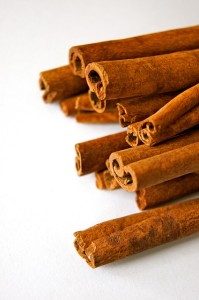 The traditional spices used in the Czech cuisine are both local and brought from abroad. One of the most universal ones is probably pepper without which it is not possible to imagine a proper sauce or soup, let alone potato pancakes. Another widely used spices are marjoram, which is the main contributor to deliciousness of potato pancakes, paprika which is used in many soups and sauces and, of course, goulash. Many traditional Czech meals are also spiced with a fair amount of garlic, either ground or in a form of garlic powder. A very good friend of sweet pastry then is cinnamon, and combined with aniseed it helps to make delicious mulled wine. Because Czechs are also big fans of various pickled vegetable, mustard seed cannot be missing in any of the Czech households. Needles to add that mustard as such goes very well with popular Czech smoked meat products, such as many kinds of sausages and salami.
The traditional spices used in the Czech cuisine are both local and brought from abroad. One of the most universal ones is probably pepper without which it is not possible to imagine a proper sauce or soup, let alone potato pancakes. Another widely used spices are marjoram, which is the main contributor to deliciousness of potato pancakes, paprika which is used in many soups and sauces and, of course, goulash. Many traditional Czech meals are also spiced with a fair amount of garlic, either ground or in a form of garlic powder. A very good friend of sweet pastry then is cinnamon, and combined with aniseed it helps to make delicious mulled wine. Because Czechs are also big fans of various pickled vegetable, mustard seed cannot be missing in any of the Czech households. Needles to add that mustard as such goes very well with popular Czech smoked meat products, such as many kinds of sausages and salami.
Czech Republic lies in the moderate climate of Central Europe. The local climate provides a little bit of everything. Because the Czech Republic has all four seasons, the range of accessible local ingredients varies along with the weather.
Czech evergreens
The most popular and most widely used ingredients and crops are those with the longest durability. Despite the invasion of supermarkets and cheap food from abroad, there are still households which grow their own crops, so they have to stockpile it in cellars for winter. Almost three quarters of the year, or maybe the whole year around, you can have on your plate potatoes, beetroot, carrot and root vegetables in general. The Czechs are very keen potato eaters. As well as in some other countries, in the Czech Republic potatoes also provided valuable nutrition in the times of food shortage and famine in the 19th century. Another typical vegetable is cabbage which is similar to other cole crops as broccoli, cauliflower, or Brussels sprouts. Cabbage is a typical vegetable for many East European countries, as well as for China and Japan. Typical Czech ways of preparing cabbage is to stew it with spices, or to put the chopped cabbage in a sweet and sour pickle. Cabbage is used in Czech pastry, as a part of various pickles, soups, as a side dish, in salads and so on. Carrots and other root vegetables are typically used in broths and with roast meat. We also grow and consume quite a lot of legumes as peas and beans and Czech fields provide fertile soil for various types of cereals which lay foundation for Czech pastry and baking which is also very popular.
No kitchen could do without onion and garlic which are necessary taste boosters in many meals. As for the fruit in Czech cuisine, it is used as preserves, for jams and compotes, as well as typical Czech fruit cakes and other pastry. The most widely grown and used types of fruit are apples, peaches, strawberries, pears, or apricots. In some parts of Moravia plum also is very popular, yet for slightly different reasons than cooking, although cooking is included. Plum is the core of good homemade spirit called slivovice.
Spices
The traditional spices used in the Czech cuisine are both local and brought from abroad. One of the most universal ones is probably pepper without which it is not possible to imagine a proper sauce or soup, let alone potato pancakes. Another widely used spices are marjoram, which is the main contributor to deliciousness of potato pancakes, paprika which is used in many soups and sauces and, of course, goulash. Many traditional Czech meals are also spiced with a fair amount of garlic, either ground or in a form of garlic powder. A very good friend of sweet pastry then is cinnamon, and combined with aniseed it helps to make delicious mulled wine. Because Czechs are also big fans of various pickled vegetable, mustard seed cannot be missing in any of the Czech households. Needles to add that mustard as such goes very well with popular Czech smoked meat products, such as many kinds of sausages and salami.
Normal 0 21 false false false CS X-NONE X-NONE /* Style Definitions */ table.MsoNormalTable {mso-style-name:"Normální tabulka"; mso-tstyle-rowband-size:0; mso-tstyle-colband-size:0; mso-style-noshow:yes; mso-style-priority:99; mso-style-qformat:yes; mso-style-parent:""; mso-padding-alt:0cm 5.4pt 0cm 5.4pt; mso-para-margin-top:0cm; mso-para-margin-right:0cm; mso-para-margin-bottom:10.0pt; mso-para-margin-left:0cm; line-height:115%; mso-pagination:widow-orphan; font-size:11.0pt; mso-ascii- mso-ascii-theme- mso-fareast- mso-fareast-theme- mso-hansi- mso-hansi-theme- mso-bidi- mso-bidi-theme-}
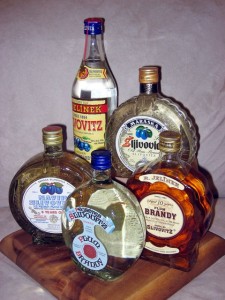 If there is an ingredient which could be considered universal for this region, it would most definitely be the plum. If you provide a local with sufficient amount of plums, he will prepare any meal from starters to desserts. And after he is finished, he would probably distil some slivovitz (slivovice).
If there is an ingredient which could be considered universal for this region, it would most definitely be the plum. If you provide a local with sufficient amount of plums, he will prepare any meal from starters to desserts. And after he is finished, he would probably distil some slivovitz (slivovice).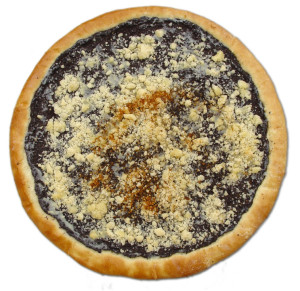 The famous Wallachian cake called Frgál is a type of sweet bread with rich fruit topping and streusel. The fruit used for frgáls comes, of course, from the local resources and these cake-like breads are usually made with plums, pears, blueberries or apples. As a variant to fruit we can have also walnut, poppy seed or curd cheese. If you cannot decide which one to choose, you can have variations of two or four different toppings on one large cake. It surely no surprise that frgál goes so well with coffee.
The famous Wallachian cake called Frgál is a type of sweet bread with rich fruit topping and streusel. The fruit used for frgáls comes, of course, from the local resources and these cake-like breads are usually made with plums, pears, blueberries or apples. As a variant to fruit we can have also walnut, poppy seed or curd cheese. If you cannot decide which one to choose, you can have variations of two or four different toppings on one large cake. It surely no surprise that frgál goes so well with coffee.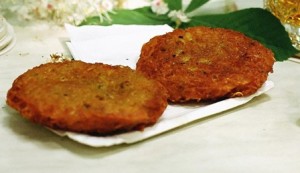
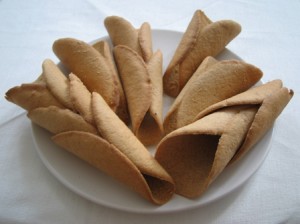
 Magdalena Dobromila Rettigová lived between 1785 and 1845. She was a Czech revivalist and author of cookbooks, poems, plays and short prose. Magdalena, by maiden name Artmannová, married a Czech lawyer, patriot and writer J. A. Rettig. She was brought up in German environment and her first writings were also in German. Under the influence of her husband and Czech writing society, she started to write in Czech and her “silly verses and weepy stories” were gaining in popularity.
Magdalena Dobromila Rettigová lived between 1785 and 1845. She was a Czech revivalist and author of cookbooks, poems, plays and short prose. Magdalena, by maiden name Artmannová, married a Czech lawyer, patriot and writer J. A. Rettig. She was brought up in German environment and her first writings were also in German. Under the influence of her husband and Czech writing society, she started to write in Czech and her “silly verses and weepy stories” were gaining in popularity.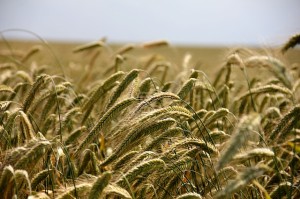 wheat flours. Depending on the proportion of the two we then call the bread either rye-wheat bread (more ryeflour than wheatflour) or wheat-rye bread. The proportion of these two flours in the typical Czech bread varies and depends to a large extent on local customs. The most balanced option is a 1:1 ratio with slight predominance of wheat flour. The difference, when compared to standard white, purely wheat bread is really obvious.
wheat flours. Depending on the proportion of the two we then call the bread either rye-wheat bread (more ryeflour than wheatflour) or wheat-rye bread. The proportion of these two flours in the typical Czech bread varies and depends to a large extent on local customs. The most balanced option is a 1:1 ratio with slight predominance of wheat flour. The difference, when compared to standard white, purely wheat bread is really obvious.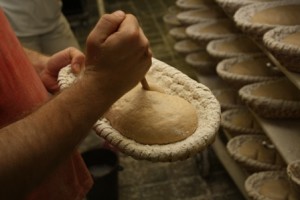 The credit for this process goes to enzymes, bacteria spores and yeast cells which are naturally contained in flour. The enzymes then simply begin degrading the flour starch into lower sugars. This provides a perfect culture medium for bacteria and yeast cells which start to reproduce themselves uncontrolledly.
The credit for this process goes to enzymes, bacteria spores and yeast cells which are naturally contained in flour. The enzymes then simply begin degrading the flour starch into lower sugars. This provides a perfect culture medium for bacteria and yeast cells which start to reproduce themselves uncontrolledly. Although the Czech lands do not have very rich tradition in confectionery, not as much as in bakery, it provides a range variety of adopted and modified delicacies which will satisfy everyone who loves sweets.
Although the Czech lands do not have very rich tradition in confectionery, not as much as in bakery, it provides a range variety of adopted and modified delicacies which will satisfy everyone who loves sweets. The best time for confectionery then comes with Christmas. The Christmas family top would certainly include the vanilla rolls with butter and walnut, a nice small brittle which almost melts in the mouth. Another kind of sweet you would typically find on the Christmas table is small gingerbreads decorated with lemon icing. These small crunchy sweets take shape of animals and fairy tale characters, or little cottages, Christmas trees, angels and other related motives. The top third is completed by Linzer cookies, which are among many types adopted from the surrounding countries, yet are considered as traditional as most of the others.
The best time for confectionery then comes with Christmas. The Christmas family top would certainly include the vanilla rolls with butter and walnut, a nice small brittle which almost melts in the mouth. Another kind of sweet you would typically find on the Christmas table is small gingerbreads decorated with lemon icing. These small crunchy sweets take shape of animals and fairy tale characters, or little cottages, Christmas trees, angels and other related motives. The top third is completed by Linzer cookies, which are among many types adopted from the surrounding countries, yet are considered as traditional as most of the others.